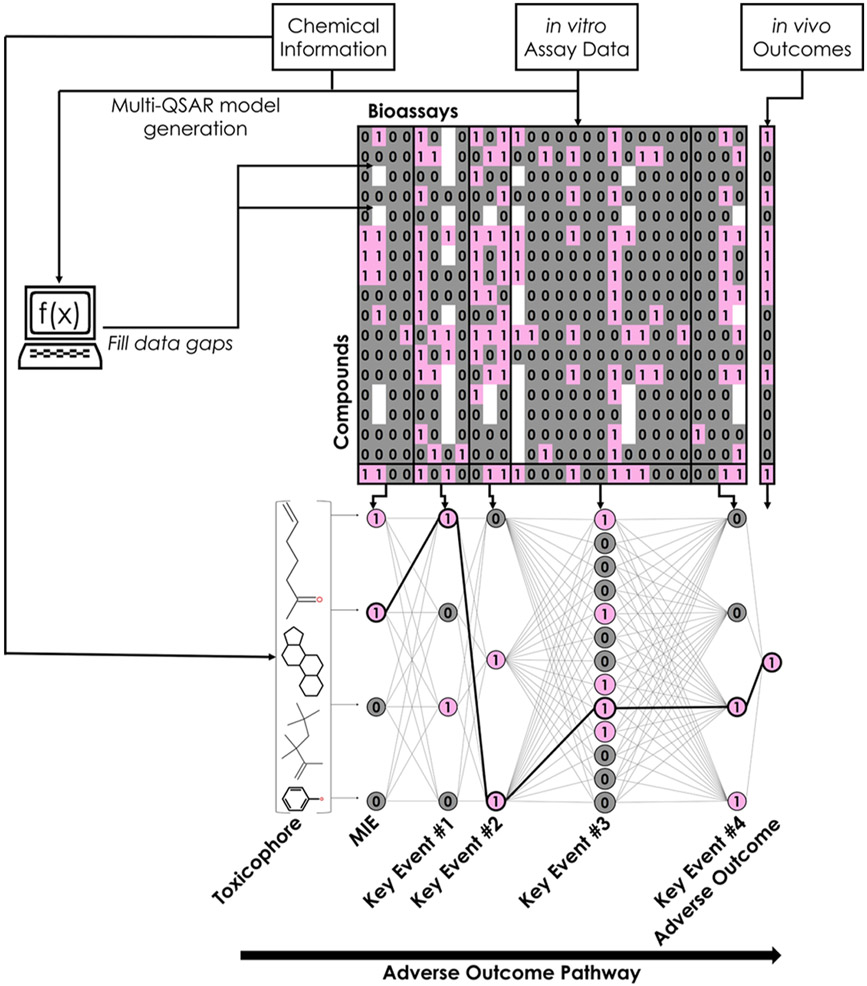Figure 2.
Workflow used in this study. The modeling workflow employed in this study consists of four main stages: generation of chemical fingerprints and retrieval of in vitro bioassay data for each compound in the training set, generation and implementation of QSAR models to fill data gaps, organization of in vitro data into biological levels of organization (MIE through adverse outcome), and network training. Pink cells and neurons with a value of 1 represent active bioassay results, and gray neurons and cells with a value of 0 represent inactive bioassay results.

